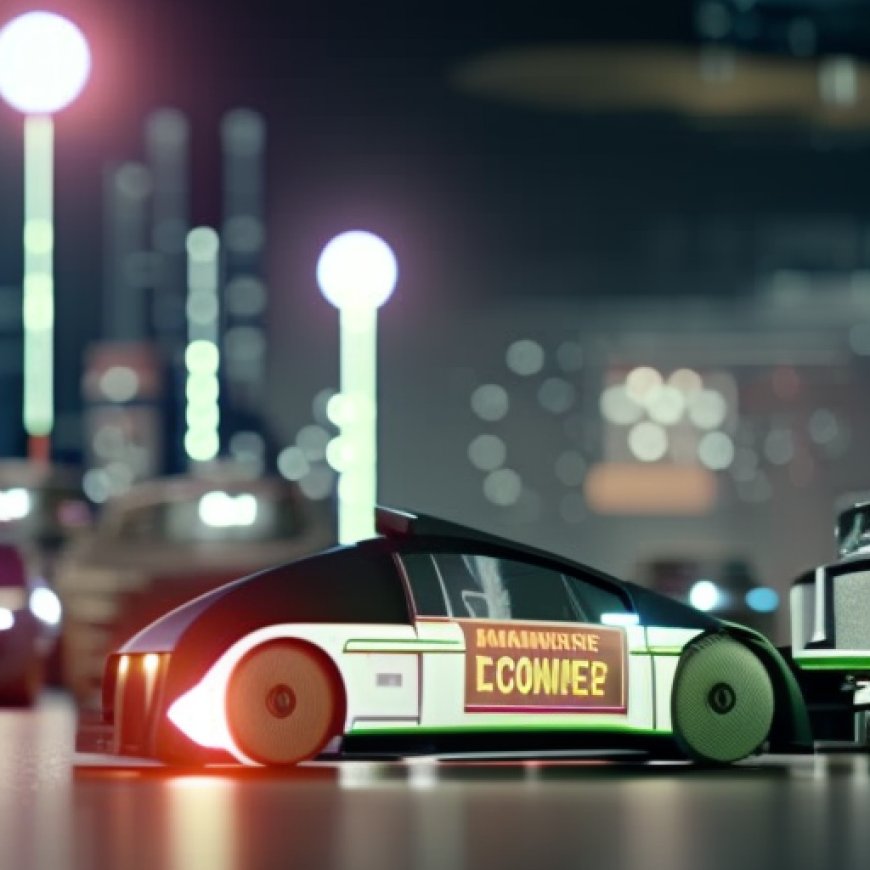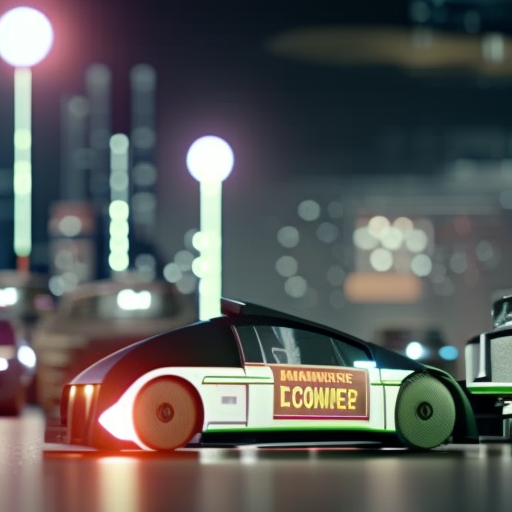New Consortium to Make Batteries for Electric Vehicles More Sustainable
New Consortium to Make Batteries for Electric Vehicles More ... Lawrence Berkeley National Laboratory (.gov)


Accelerating the Commercialization of DRX Cathode Materials for Sustainable Battery Technology
Key Takeaways
- A new battery material called disordered rock salt (DRX) has the potential to replace gasoline vehicles with electric vehicles at a faster rate.
- DRX cathodes offer higher energy density than conventional cathodes made of nickel and cobalt, making electric vehicle batteries more sustainable.
- The DRX Consortium aims to demonstrate commercial-ready DRX cathodes in just a few years, significantly reducing the typical timeline for new battery materials.
Introduction
A consortium led by Lawrence Berkeley National Laboratory (Berkeley Lab) is working to accelerate the commercialization of a new family of battery cathode materials known as disordered rock salt (DRX).
DRX cathodes have the potential to provide batteries with higher energy density compared to traditional lithium-ion battery cathodes made of nickel and cobalt, which are currently facing critical supply shortages.
The U.S. Department of Energy (DOE) has prioritized the reduction or elimination of cobalt in batteries. In line with this initiative, the DRX Consortium is focused on developing DRX cathodes made of manganese or titanium, which are more abundant and cost-effective than nickel or cobalt. Lithium batteries with DRX cathodes could help mitigate supply constraints and ensure affordability for the automobile industry and consumers.
Advantages of DRX Cathodes
DRX cathodes can be made with various transition metals instead of nickel and cobalt, offering versatility that is crucial for replacing gasoline vehicles with electric vehicles. This flexibility in material composition makes DRX a promising candidate for battery cathodes.
The DRX Consortium, co-led by Gerbrand Ceder and Guoying Chen at Berkeley Lab, aims to develop DRX battery cathodes that can perform as well as, if not better than, the current nickel-manganese-cobalt (NMC) cathodes used in lithium-ion batteries. The consortium, consisting of approximately 50 scientists from Berkeley Lab, SLAC National Accelerator Laboratory, Pacific Northwest National Laboratory, Argonne National Laboratory, Oak Ridge National Laboratory, and the University of California at Santa Barbara, has received $20 million in funding from the DOE’s Vehicle Technologies Office.
Decarbonizing Transportation with DRX
DRX is a relatively young technology, having been developed by Ceder and his team in 2014. Typically, new battery technologies take several decades to mature, but DRX is on an accelerated path towards commercialization.
The DRX Consortium was formed after the successful demonstration of DRX’s potential during a four-year program called the “Deep Dive,” which was also funded by the DOE Vehicle Technologies Office. The consortium aims to demonstrate commercial-ready DRX cathodes within five years.
This urgency is driven by the global clean energy transition. The United States aims to have half of all new cars sold in 2030 be zero-emissions vehicles, including electric vehicles. California has set a mandate for all new cars to be zero-emission vehicles starting in 2035.
To achieve these ambitious goals, the DRX Consortium has enlisted the expertise of top battery scientists from national laboratories and universities across the country. Researchers will utilize computational modeling at the National Energy Research Scientific Computing Center (NERSC) to identify the best combination of manganese and titanium for DRX cathodes. Chemical synthesis and scale-up will be carried out at Oak Ridge National Laboratory and Argonne National Laboratory. Pacific Northwest National Laboratory will focus on developing DRX-compatible electrolytes, while Berkeley Lab’s Molecular Foundry, SLAC National Accelerator Laboratory, and UC Santa Barbara will assist with materials characterization.
Contributions of Computational Modeling and Testing
Ceder, a pioneer in computational materials discovery, and his team discovered DRX through computer model experiments, many of which were performed at NERSC. Vince Battaglia and his team at Berkeley Lab will test various formulations of titanium or manganese in DRX cathodes by fabricating dozens of DRX coin-cell batteries. The goal is to improve the material’s electronic conductivity, which is essential for achieving high energy density and cycle life in DRX lithium-ion batteries.
DRX’s Role in Decarbonizing Transportation
The transportation sector is a major contributor to greenhouse gas emissions worldwide. Replacing gasoline-powered vehicles with electric vehicles is seen as a crucial step in rapidly decarbonizing the transportation sector. DRX could play a key role in this transition by providing reliable, affordable, and abundant energy storage.
According to climate scientists, greenhouse gas emissions must be halved by 2030 to prevent a significant increase in global warming. DRX offers a promising solution to help achieve this target.
Conclusion
The development of DRX cathodes represents a significant advancement in sustainable battery technology. The DRX Consortium’s efforts to accelerate the commercialization of DRX cathodes could revolutionize the electric vehicle industry and contribute to the decarbonization of transportation. With its higher energy density and reduced reliance on scarce metals like nickel and cobalt, DRX has the potential to drive the widespread adoption of electric vehicles and support the achievement of Sustainable Development Goals (SDGs) related to clean energy and climate action.
SDGs, Targets, and Indicators
-
SDG 7: Affordable and Clean Energy
- Target 7.2: By 2030, increase substantially the share of renewable energy in the global energy mix.
- Indicator 7.2.1: Renewable energy share in the total final energy consumption.
The article discusses the development of a new battery material, DRX, which could lead to more sustainable and efficient lithium-ion batteries for electric vehicles. This aligns with SDG 7, which aims to promote affordable and clean energy. The use of DRX cathodes could contribute to the increase in renewable energy sources for transportation.
-
SDG 9: Industry, Innovation, and Infrastructure
- Target 9.4: By 2030, upgrade infrastructure and retrofit industries to make them sustainable, with increased resource-use efficiency and greater adoption of clean and environmentally sound technologies and industrial processes.
- Indicator 9.4.1: CO2 emission per unit of value added.
The development and commercialization of DRX cathodes can contribute to achieving SDG 9 by promoting innovation in the battery industry and improving resource-use efficiency. By replacing conventional cathodes made of nickel and cobalt with DRX cathodes made of more abundant and cheaper materials like manganese or titanium, the battery industry can reduce its reliance on scarce resources and decrease CO2 emissions associated with the production of these materials.
-
SDG 13: Climate Action
- Target 13.2: Integrate climate change measures into national policies, strategies, and planning.
- Indicator 13.2.1: Number of countries that have integrated mitigation, adaptation, impact reduction, and early warning measures into their national policies, strategies, and planning.
DRX cathodes can contribute to SDG 13 by enabling the decarbonization of the transportation sector. By replacing gasoline vehicles with electric vehicles powered by lithium-ion batteries with DRX cathodes, greenhouse gas emissions from the transportation sector can be significantly reduced. This aligns with the target of integrating climate change measures into national policies and planning.
Table: SDGs, Targets, and Indicators
| SDGs | Targets | Indicators |
|---|---|---|
| SDG 7: Affordable and Clean Energy | Target 7.2: By 2030, increase substantially the share of renewable energy in the global energy mix. | Indicator 7.2.1: Renewable energy share in the total final energy consumption. |
| SDG 9: Industry, Innovation, and Infrastructure | Target 9.4: By 2030, upgrade infrastructure and retrofit industries to make them sustainable, with increased resource-use efficiency and greater adoption of clean and environmentally sound technologies and industrial processes. | Indicator 9.4.1: CO2 emission per unit of value added. |
| SDG 13: Climate Action | Target 13.2: Integrate climate change measures into national policies, strategies, and planning. | Indicator 13.2.1: Number of countries that have integrated mitigation, adaptation, impact reduction, and early warning measures into their national policies, strategies, and planning. |
Behold! This splendid article springs forth from the wellspring of knowledge, shaped by a wondrous proprietary AI technology that delved into a vast ocean of data, illuminating the path towards the Sustainable Development Goals. Remember that all rights are reserved by SDG Investors LLC, empowering us to champion progress together.
Source: newscenter.lbl.gov

Join us, as fellow seekers of change, on a transformative journey at https://sdgtalks.ai/welcome, where you can become a member and actively contribute to shaping a brighter future.







